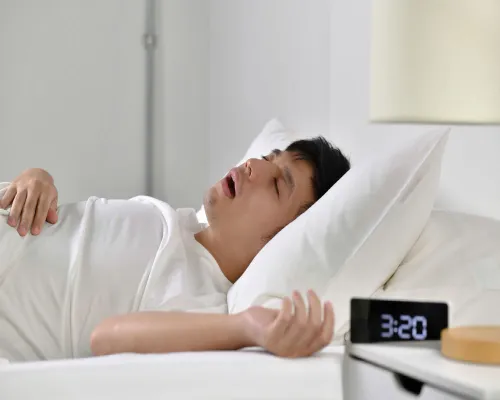Sleep is a cornerstone of our well-being, essential for the body and mind to rejuvenate and function optimally. Yet, for many, the quality of sleep is compromised by a condition known as sleep apnea. Often underestimated, this disorder not only affects rest but also has profound implications for oral health.
Understanding Sleep Apnea
Sleep apnea is a sleep syndromeconsidered by pauses in breathing or shallow breaths throughout sleep. These interruptions can occur multiple times throughout the night, leading to fragmented sleep and reduced oxygen flow to vital organs. There are primarily two types of sleep apnea:
1. Obstructive Sleep Apnea (OSA)
- This form results from the relaxation of throat muscles, causing the airway to narrow or close during sleep.
2. Central Sleep Apnea (CSA)
- CSA happens when the brain fails to send correct signals to the muscles that control breathing.
The Oral Health Connection
The relationship between sleep apnea and oral health is intricate and multifaceted, with several key connections:
1. Bruxism:
- Sleep apnea and teeth grinding (bruxism) often coexist. The strain from obstructed breathing prompts the body to respond by clenching or grinding teeth, leading to wear, fractures, and even tooth loss.
2. Dry Mouth (Xerostomia):
- Reduced saliva flow is common in individuals with sleep apnea. Mouth breathing, a symptom of OSA, dries the oral cavity, increasing the risk of tooth decay, gum disease, and oral infections.
3. Temporomandibular Joint Disorder (TMJ):
- Sleep apnea can contribute to TMJ disorder due to the strain placed on the jaw from repeated clenching or grinding during sleep.
4. Periodontal Disease:
- Studies suggest a correlation between sleep apnea and periodontal disease. The inflammation caused by OSA may exacerbate gum disease, leading to tissue damage and tooth loss.
Oral Appliances and Treatment
Dentists play a crucial role in identifying potential signs of sleep apnea during routine dental examinations. Oral appliances, such as mandibular advancement devices (MADs) or tongue-retaining devices, are increasingly used as treatment options. These devices help maintain an open airway during sleep, reducing symptoms and improving both sleep quality and oral health.
Continuous Positive Airway Pressure (CPAP) therapy remains the primary treatment for moderate to severe sleep apnea. However, compliance issues and discomfort sometimes lead individuals to seek alternative treatments like oral appliances.
Guidelines for Maintaining Oral Health with Sleep Apnea
- Regular Dental Check-ups: Routine visits to the dentist can aid in early detection and management of oral health issues related to sleep apnea.
- Hydration: Stay well-hydrated to combat dry mouth. Sipping water and using humidifiers can alleviate oral dryness.
- Follow Treatment Plans: Adhere to prescribed treatments, whether CPAP therapy or oral appliances, to manage sleep apnea effectively.
- Healthy Oral Hygiene: Brushing, flossing, and using mouthwash are crucial for preventing dental problems exacerbated by sleep apnea.
Conclusion
The link between sleep apnea and oral health underscores the importance of a holistic approach to healthcare. Addressing sleep apnea not only enhances sleep quality and overall well-being but also significantly impacts oral health outcomes. Awareness, timely intervention, and a collaborative effort between medical and dental professionals are pivotal in managing this intricate relationship for improved health and vitality.
As research continues to unravel the complexities of sleep disorders, understanding the interconnectedness between sleep apnea and oral health will pave the way for more comprehensive treatment strategies, ensuring individuals achieve not just restful sleep but also optimal oral health.
In the pursuit of a healthier life, acknowledging and addressing the symbiotic relationship between sleep apnea and oral health becomes an essential step toward holistic well-being.
So, let’s rest better, breathe easier, and smile brighter—one night at a time.


